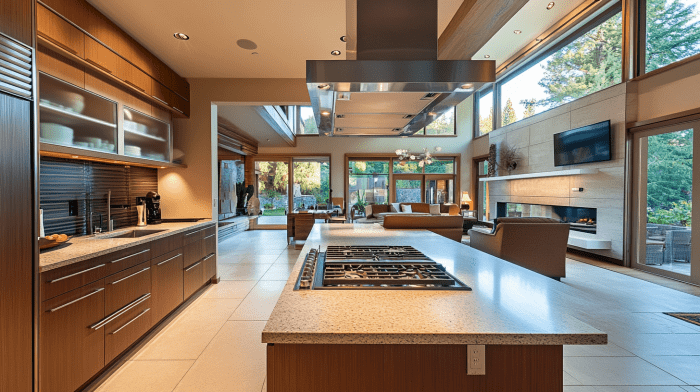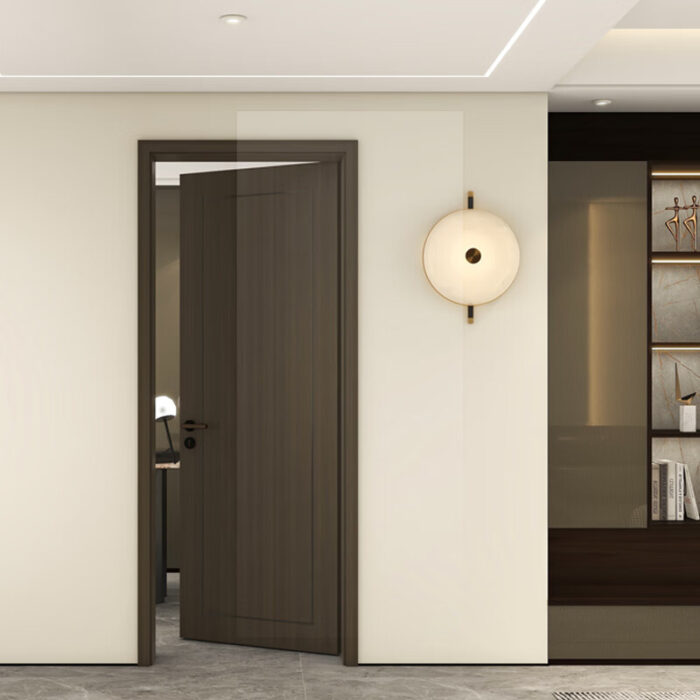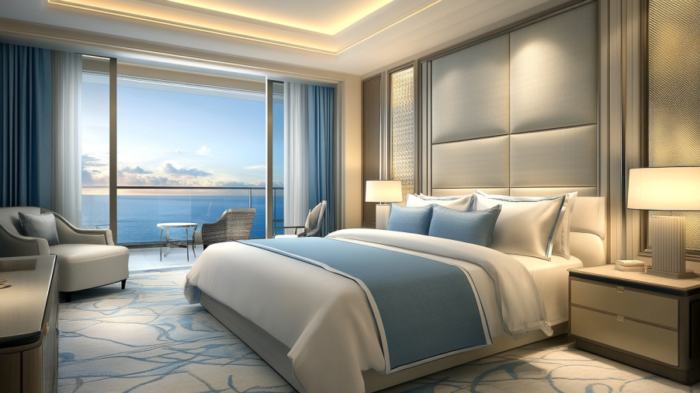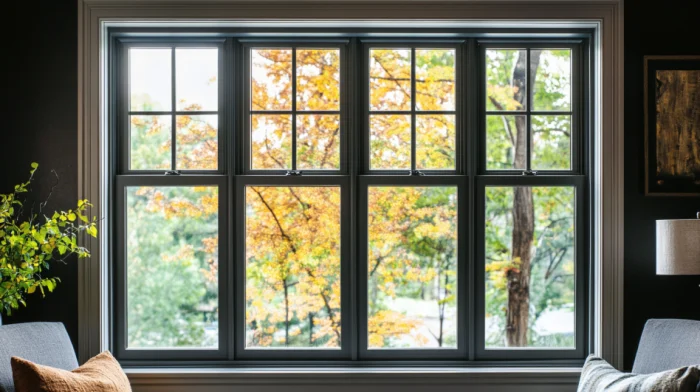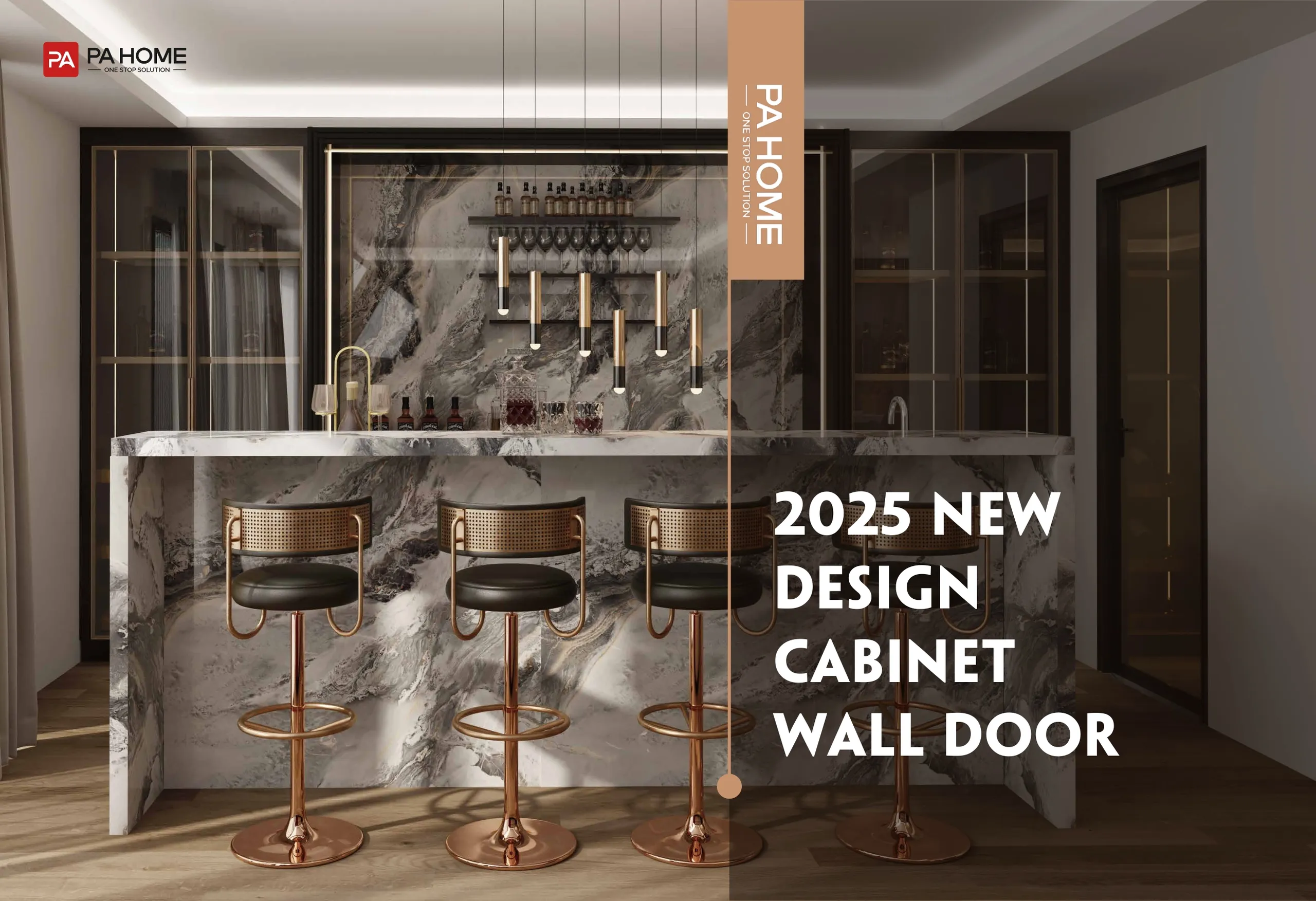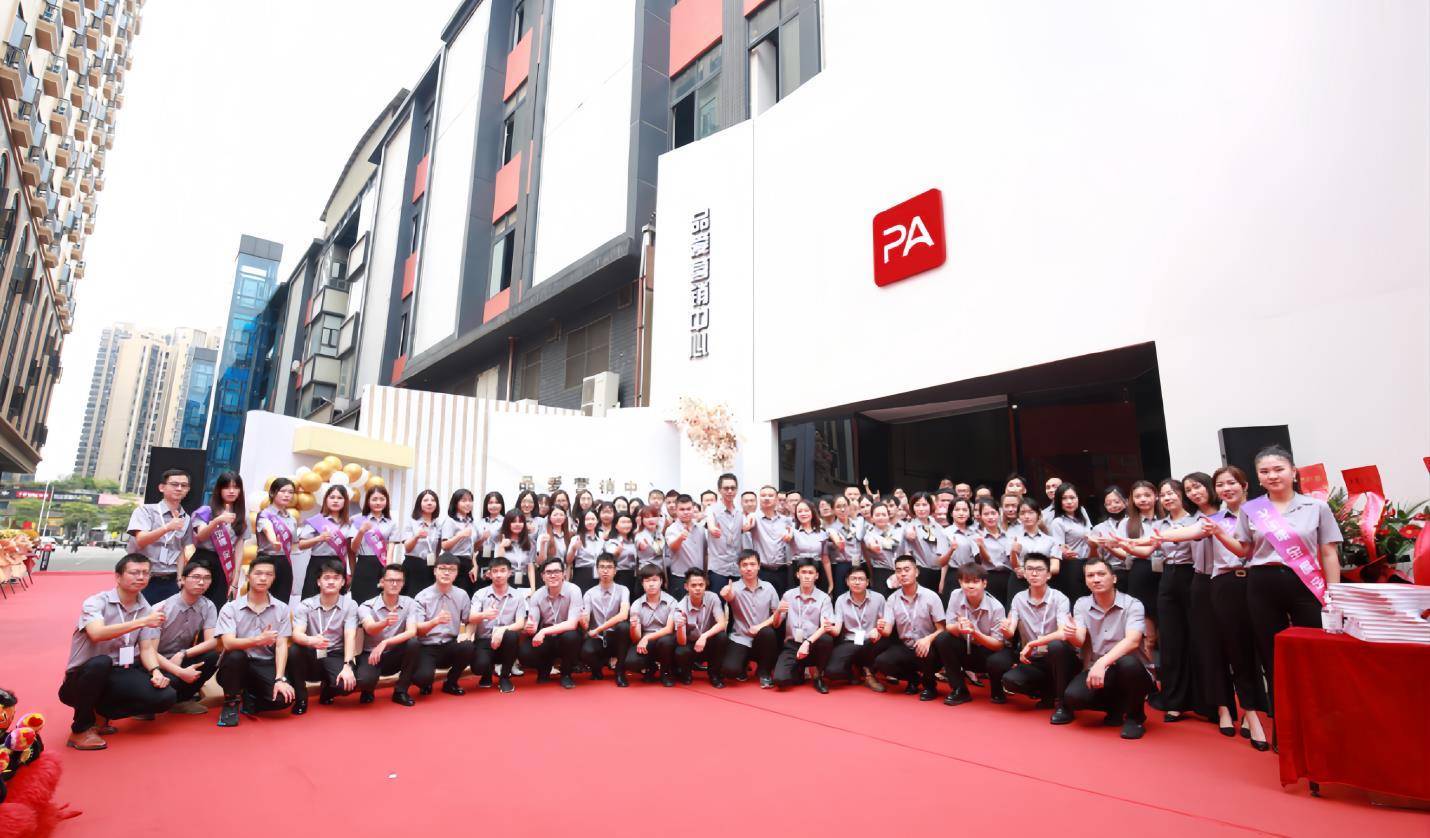PVC kitchen cabinets are a popular choice among homeowners and interior designers due to their durability, affordability, and low maintenance. In this comprehensive guide, we will cover everything you need to know about PVC kitchen cabinets, from their features and benefits to their installation and care.
What is PVC Kitchen Cabinets?
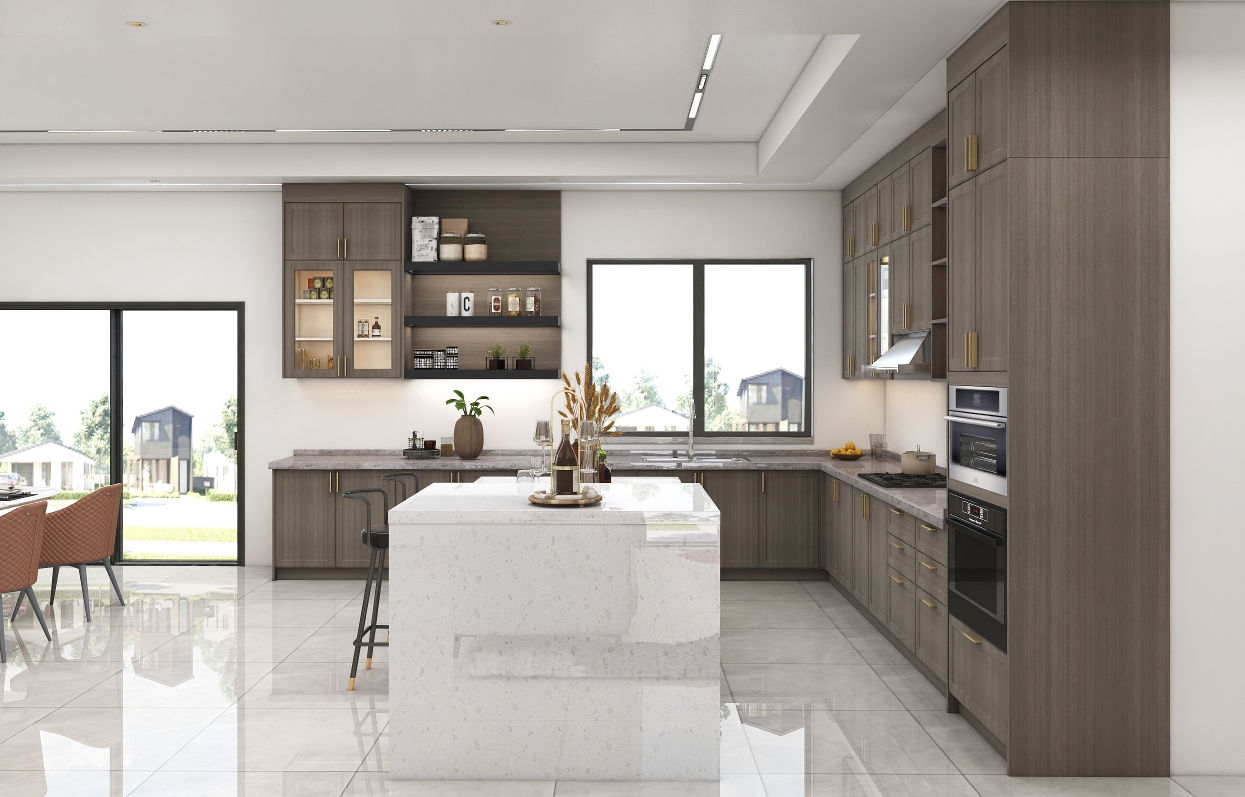
Polyvinyl chloride board or PVC is a composite plastic board that has a tough finish. This unique kitchen cabinet material is widely available and inexpensive.
A kitchen fitted with PVC cabinets gives off a feeling of comfort and warmth. PVC looks like wood, but it is actually made of polyvinyl chloride board. So, the cost is more affordable. It’s extremely well made and almost indistinguishable from real wood. PVC also has wood patterns.
PVC Kitchen Cabinets Pros and Cons
Pros of PVC Kitchen Cabinets
Easy to Install
PVC cabinets are ideal for DIY installation. Due to their lightweight nature and simple assembly process, they can be installed quickly and easily. This makes them particularly appealing for homeowners who want to save on installation costs.Economical Option
Compared to wooden cabinets, PVC cabinets are a very cost-effective choice. They provide an affordable solution that doesn’t compromise on aesthetics or functionality, making them an attractive option for budget-conscious homeowners.Moisture-Resistant
PVC is naturally resistant to moisture, making it perfect for kitchen environments. It won’t swell or warp like wood when exposed to humidity, making it a durable choice in areas prone to spills and steam.Termite-Proof
PVC cabinets are immune to termite damage, unlike wood cabinets that can be easily affected by termites. This makes PVC a more reliable option for long-term use in kitchens.Available in Many Colors and Requires No Additional Finishes
PVC cabinets come in a wide range of colors and textures, making it easy to match them to various kitchen designs. They don’t require additional paint or finishes, which makes them low-maintenance and easy to maintain.
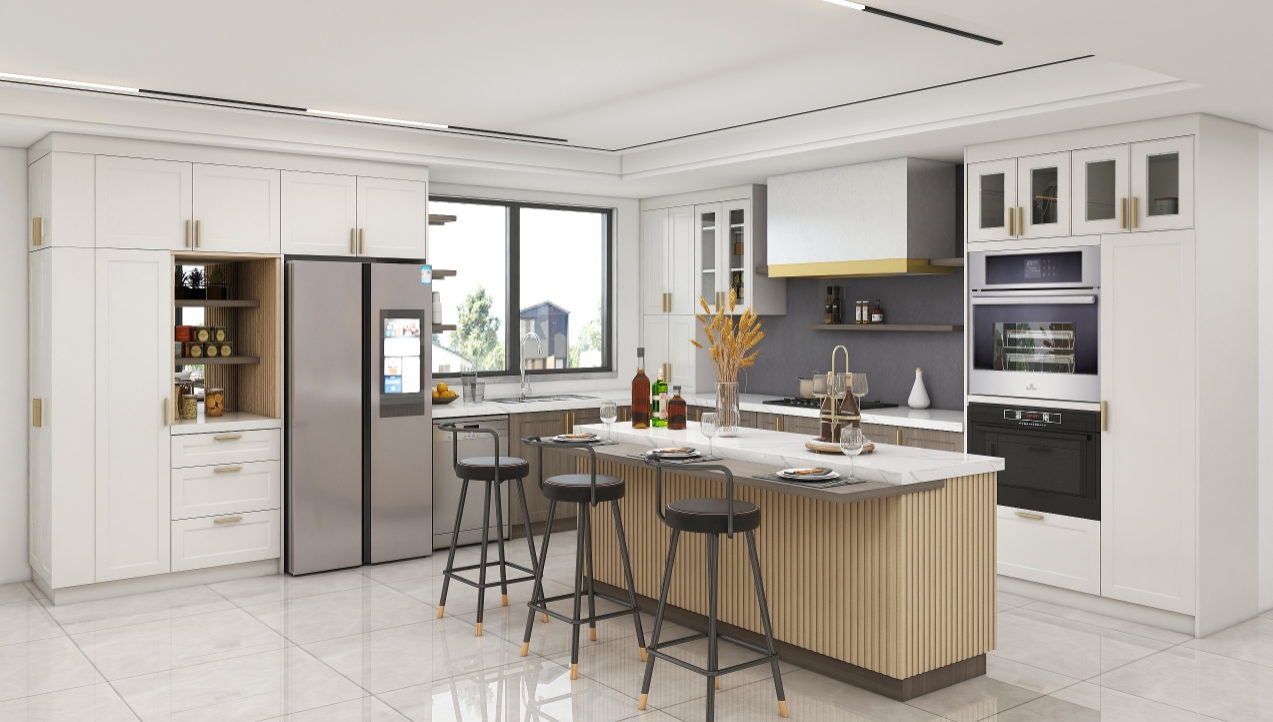
Cons of PVC Kitchen Cabinets
Prone to Damage if Not Maintained
While PVC cabinets are durable, they can still be damaged if not maintained properly. If exposed to sharp objects or heavy impacts, the surface may scratch or dent.Prone to Deformation if Not Installed Well
If PVC cabinets are not installed correctly, they may deform. This is especially true for the joints and connections, which could cause the cabinet to be misaligned or unstable.Not Typically Fire-Resistant
PVC does not offer fire resistance. In high-heat environments like kitchens, direct contact with hot objects may cause the material to melt or warp.Prone to Attracting Insects if Not Cleaned Well
If PVC cabinets are not cleaned regularly, they may attract insects, especially in humid conditions. Proper cleaning and maintenance are necessary to avoid this issue.Might Get Discolored Over the Years if Not Maintained
Over time, the color of PVC cabinets may fade, particularly when exposed to direct sunlight. Proper cleaning and maintenance are essential to keep them looking new for longer.
Objective Comparison with Alternative Cabinet Finishes
It’s essential to compare the PVC finish to other common cabinet finishes to understand its unique advantages and potential trade-offs.
| Feature | PVC Finish | Painted Finishes |
|---|---|---|
| Advantages | Superior moisture resistance and durability. | Can offer a high-end, custom look with various color choices. |
| Maintenance | Retains its appearance with minimal upkeep. | Often requires touch-ups or repainting to maintain a pristine look. |
| Color Options | Consistent and available in diverse colors and textures. | — |
| Feature | PVC Finish | Laminate Finishes |
|---|---|---|
| Advantages | Provides a smooth, uniform look with excellent water resistance. | Often cost-effective and available in many designs. |
| Durability | Better suited for environments with frequent moisture exposure. | Can be more susceptible to scratches and may not perform as well in high-humidity areas. |
| Feature | PVC Finish | Veneer Finishes |
|---|---|---|
| Advantages | Easier to clean and more resistant to water damage. | Provide a natural wood appearance that many find aesthetically pleasing. |
| Performance | Offers long-term durability with minimal maintenance. | Can be more sensitive to moisture and require more careful maintenance to avoid peeling or warping. |
PVC Kitchen Cabinets Design Ideas
1. Modern Minimalist Design
1.1 Clean Lines & Neutral Tones:
- Choose pure whites, light grays, or soft beiges.
- Emphasize simplicity with flush cabinet doors and hidden handles.
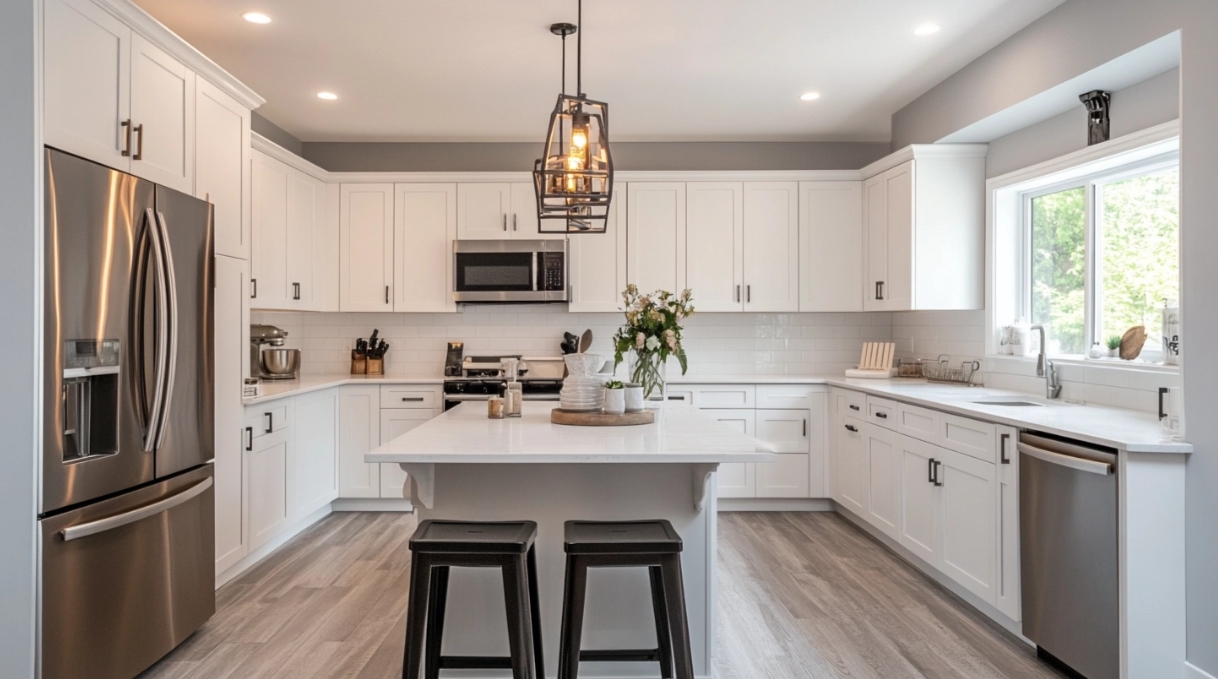
1.2 Open Layouts:
- Integrate open shelving with PVC Kitchen Cabinets for an airy feel.
- Let your countertops and backsplashes complement the cabinet design.
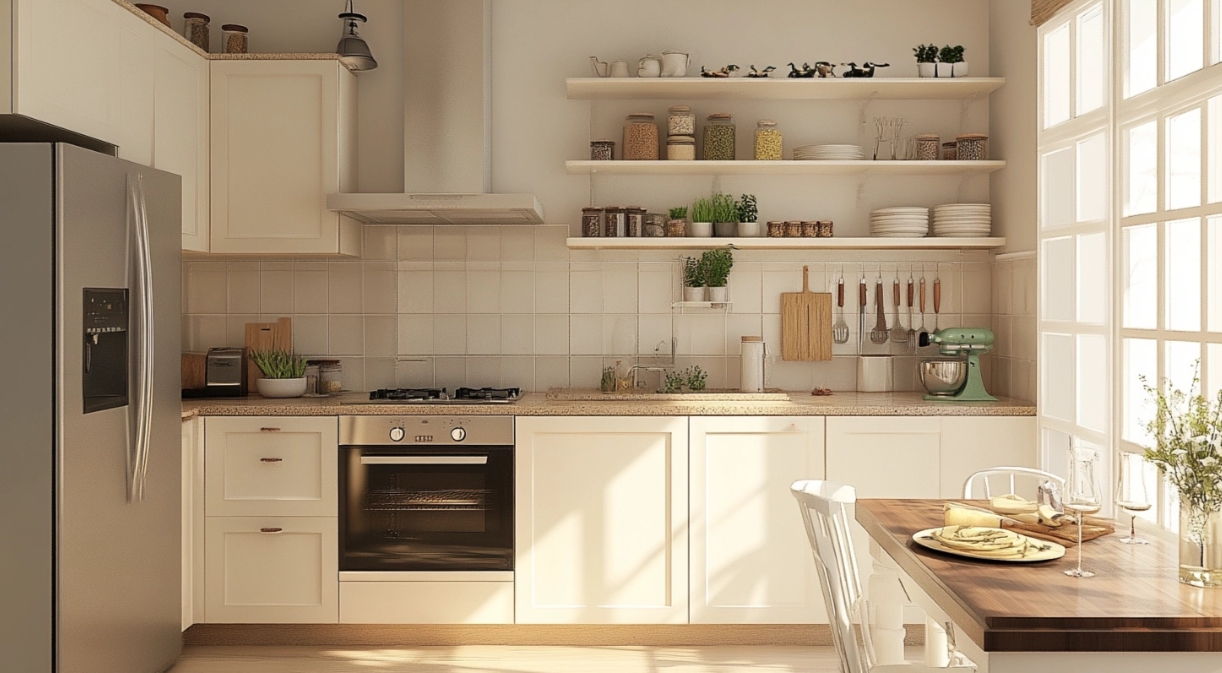
2. Bold Contemporary Accents
2.1 Striking Color Combinations:
- Combine dark, bold hues like deep blue or charcoal with bright accent colors.
- Use vibrant hardware or in-cabinet lighting to create visual interest.
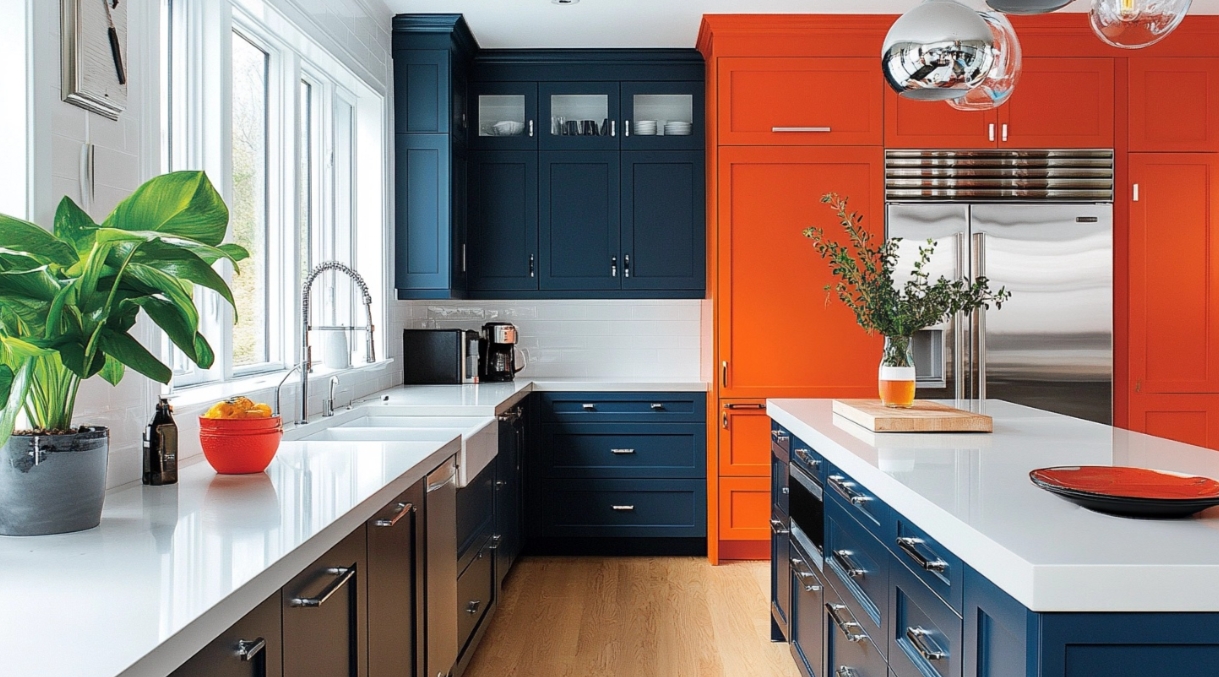
2.2 Mixing Materials:
- Pair PVC cabinets with natural stone countertops or metal elements.
- This contrast adds texture and depth while maintaining modernity.
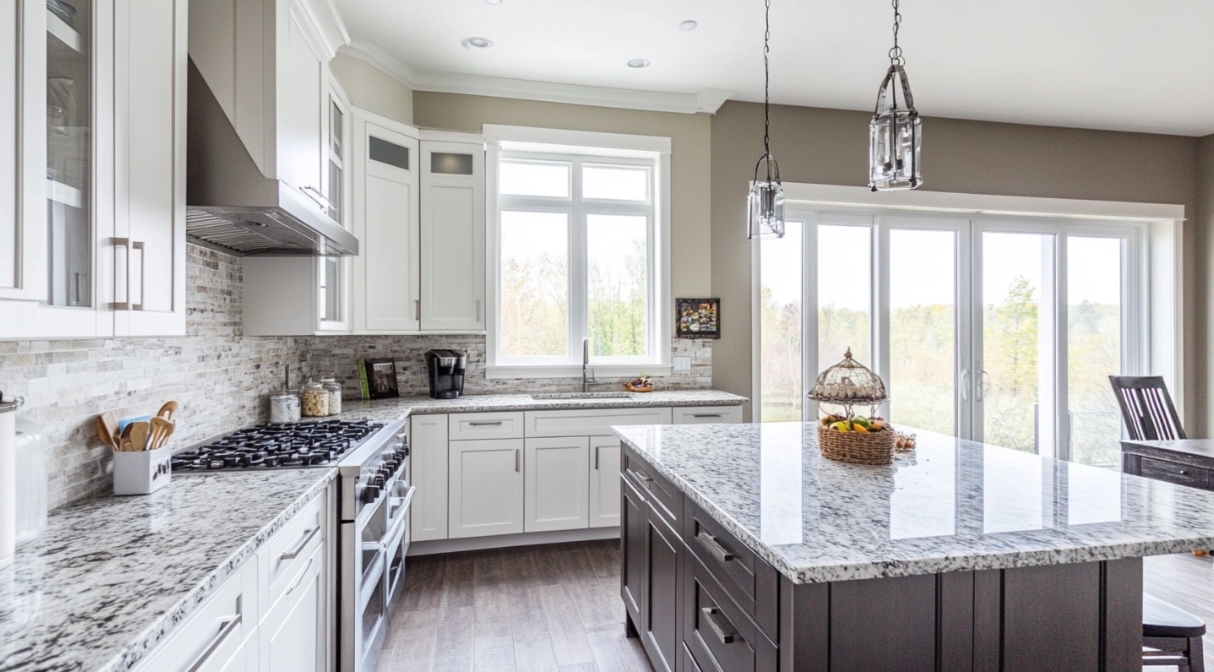
3. Rustic Industrial Fusion
3.1 Warm & Weathered Tones:
- Use earthy colors or distressed finishes on your PVC Kitchen Cabinets.
- Combine with reclaimed wood accents or metal frames.
3.2 Exposed Elements:
- Highlight open shelving or industrial-style supports.
- Use metal accents or vintage fixtures to amplify the rustic feel.
3.3 Practical Aesthetics:
- Ensure the design remains functional with ample storage and easy-to-clean surfaces.
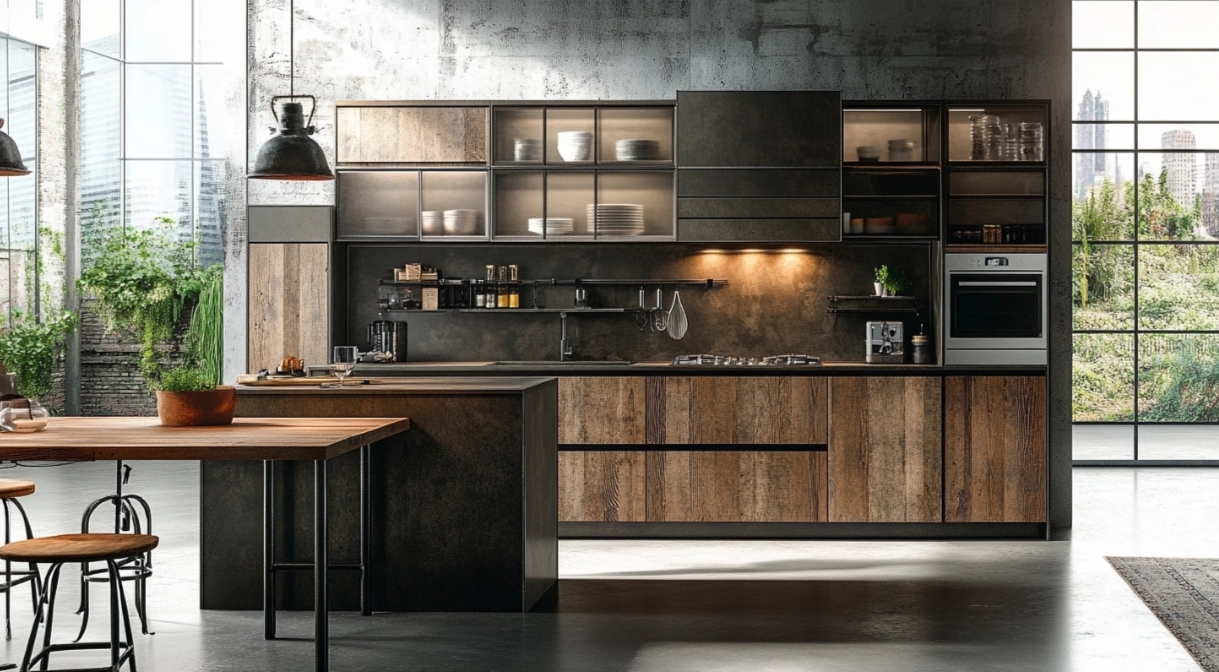
How Much Does It Cost to PVC Kitchen Cabinets?
The average cost of PVC kitchen cabinets ranges from 160 USD to 380 USD per linear for semi-custom and stock styles. The cost may reach up to 1,000 USD for custom cabinetry per linear foot.
Preassembled or stock kitchen cabinets are usually the most affordable options. The average cost may range from 100 USD to 280 USD per linear foot. Preassembled PVC kitchen cabinets are ideal for a standard 10 by 12 feet or 10 by 10 feet.
Custom PVC kitchen cabinets may cost around 500 USD to 1,200 USD per linear foot. Custom cabinets, however, are suitable for homeowners with a larger budget. Working with our PVC kitchen cabinet designers will allow you to add exceptional features to your custom kitchen décor.
How to Paint PVC Kitchen Cabinets
Unlike wood, PVC kitchen cabinets are slightly hard to paint. This is so because normal latex paint homeowners use on walls doesn’t easily stick to polyvinyl chloride. But some paints are specifically formulated for PVC surfaces.
Materials
- 150 to 220 grit sandpaper
- Cloth
- Cleaning solution
- Screwdriver
- Polyurethane varnish
- Interior latex paint formulated for PVC surfaces
- Primer
- Paint tray
- Sponge roller
- Natural bristle paintbrush
Step By Step Guidelines
These are the steps you can follow to paint PVC kitchen cabinets.
Step 1: Break them Down
The first and most important step is breaking down the cabinets. This, however, doesn’t mean demolishing the cabinets.
Before doing anything, it is advisable to take pictures or a video of the cabinets. You can use the pictures or the video as a reference when reinstalling the cabinets. Remember to put all the hardware in one place and avoid mixing the screws.
Then take off the handles, unscrew the hinges, and remove the doors or drawers, depending on the design of your cabinets. Label your doors or drawers according to where they are located. This will make the paint job much more accessible and neater.
Step 2: Clean the Surfaces of the PVC Cabinets for Kitchen

It doesn’t matter how frequently you clean your kitchen furniture. Some of the surfaces are highly likely to have grease and dirt. You can use sugar soap, a sponge, a dust cloth, and a cloth to clean the surfaces.
Soak a clean cloth in a mixture of sugar soap and warm water. Use a damp piece of cloth to wipe off any grease or dirt from the surfaces of the PVC cabinets. You can consider using trisodium phosphate if the surfaces are contaminated with excessive grime or grease.
Then dry the PVC surfaces with a dry piece of cloth. We also recommend you give them some time to air dry.
Step 3: Scuff-Sand the PVC Surfaces

The next important step is to scuff-sand the PVC surface. This step helps improve the texture of the plastic surfaces.
Use 150 to 200 grit sandpaper to sand all the surfaces. When filing the doors, make sure you are thorough at the knobs. The knobs usually receive the most wear.
After the sanding, it’s time for more cleaning. Use a vacuum cleaner to pick up the dust in the cabinets and from the crevices of the cabinet doors. Then wipe off any remaining dust with a clean damp cloth. Tape off any areas around your PVC kitchen cabinets like inside the drawers, hood fan, and anywhere else that needs to be protected from paint.
Now that the prep is done, you are ready to paint your PVC cabinets.
Step 4: Apply Primer
The choice of primers is huge on the market. But the most ideal choice is an oil-based primer—this type of primer primes and seals in one easy coat.
Start by laying all the doors with the back sides facing up. Then prime the backs of your cabinet doors using a sponge roller and a brush for hard-to-reach parts.
Each primer is different so make sure you give it enough time as recommended by the manufacturer. Then prime the front of the doors using the same method. Afterward, remember to wipe away any drips with your brush to guarantee a smooth finish.

Step 5: Paint the PVC Kitchen Cabinets
For this step, you need to select the ideal acrylic latex paint that will match your kitchen interior. Most homeowners prefer white, while others are brown. But it always comes down to personal preference.
Use the same method you used during priming to paint the cabinet boxes. Use a sponge roller for easy spots and a brush for tight spaces. Next, apply your paint to the backs of your cabinet doors. Allow time to dry, following the manufacturer’s guidelines.
Remove the protective masking tape from the edges of the cabinets while the surfaces are still wet, including cardboard and tarps.
Step 6: Rebuild the Cabinets
Once you are sure your paint is dry, it is time to add hinges. You can mount new hinges or install the old ones. Then add the handles you choose to use.
The cabinets are freshly painted. So, it’s advisable to install bumpers on the doors to prevent them from damaging or sticking.
Kitchen Cabinet: Is PVC Better than Wood?
PVC or Polyvinyl Chloride

The popularity of PVC kitchen cabinets has increased because this material is widely available and inexpensive compared to other alternatives like wood.
Apart from being inexpensive, PVC surfaces have outstanding waterproofness. This is an essential property in the kitchen, considering the water found there. They also don’t expand, contract or warp when exposed to water. So, you can expect PVC kitchen cabinets to be long-lasting.
Polyvinyl chloride has a reliable termite-proof capability. This is a good thing if your home is in a termite-infested area. Apart from termites, the material will not be easily damaged or disintegrated by other insects.
Polyvinyl chloride is a fire retardant, which means it will not burn on its own. Instead, it extinguishes the fire immediately when the eternal source of the flame is removed.
The smooth, closed surface of polyvinyl chloride is effortless to clean compared to other cabinet materials.
Wood
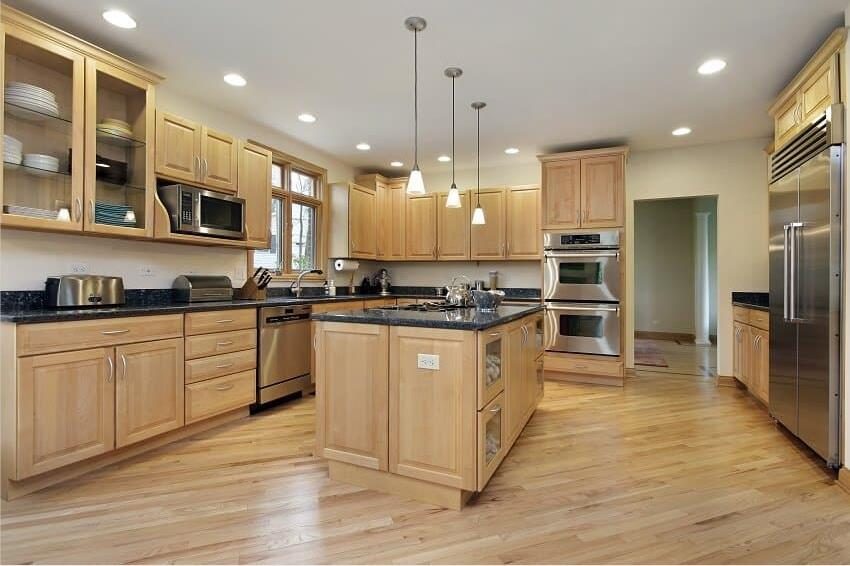
As popular as PVC kitchen cabinets are in some markets, most people still want wood cabinets in their kitchens.
This is probably because some people like the warmth of wood and the idea of using natural materials.
Wood cabinets, however, are not perfectly uniform in appearance. You should expect mineral discoloration and random grain patterns, especially if the cabinets have a clear finish. Wood is porous, which means it absorbs water. So, you can expect it to expand, contract, and warp. There are some special types of wood, however, that have good water-resistant properties.
Kitchen cabinet manufacturers usually use waterproofing stains, seals, and finishes to improve the water-resistant capability of wood.
So, What’s the Verdict?
Both materials have benefits and drawbacks. But, choosing between the two comes down to cost, durability, feel, and of course personal preference.
How much do PVC cabinets cost?
The average cost of PVC kitchen cabinets may range from 100 USD to 1,200 USD per linear foot. This makes PVC the cheaper option.
Wood kitchen cabinets, on the other hand, are usually more expensive than PVC. The overall cost of the cabinets depends greatly on the type of wood. Kitchen cabinets made of cedar may be slightly cheap. But, the ones made of Brazilian hardwoods may quite expensive.
You can cut down the cost if you decide to do a do-it-yourself project with either PVC or affordable wood like cedar.
How Do You Clean PVC Kitchen Cabinets?
Clean PVC kitchen cabinets with these helpful tips, which will help you do the job smarter, faster, and better.
Instead of wiping your PVC cabinets regularly, simply spot clean them. Use a microfiber cloth and a multi-purpose cleaner for spot cleaning. Quickly wipe away splatters and fingerprints on PVC cabinets that are open most often. Also, wipe around the hardware, such as handles and hinges.
Make it a routine to clean your PVC cabinets entirely at least once a season. Use a mild cleanser and a microfiber cloth to wipe down the inside of the doors, the shelves, and the door front. This should help remove any grime or grease buildup.
Use a small brush to clean out crevices and then use a clean piece of cloth to dry the cleaned areas.
We strongly discourage you from using strong detergents or harsh chemicals to remove grease or grime from your PVC cabinets. Instead, mix a paste of water and baking soda to help you remove tough stains, grease, and grime on painted PVC kitchen cabinets.
Just rub the paste on the grease buildup or stain and allow it to soak. Then wipe the paste with a damp microfiber cloth. Make sure you buff the cabinet dry with a piece of cloth.
Where Can I Find a PVC Kitchen Cabinets Supplier in China?
Trade Shows
Find high-quality and well-known manufacturers and suppliers of PVC kitchen cabinets from alibaba.com. It is an award-winning trade site that features some of the best deals from China.
Kitchen Cabinet Market
Sourcing Agents
This site does a great job of helping customers find manufacturers and suppliers of PVC kitchen cabinets from China. The Sourcing Agents site brings value to any client company.
Why Choose PA?
Here are the key reasons why you should choose PA as your one-stop solution for PVC kitchen cabinets:
Intelligent Manufacturing
At PA, we manufacture kitchen products with stability and precision. This is made possible with automated product assembly lines. With our big data storage and cloud computing, we can streamline mass customization.
High Production Capacity & Flexibility
We’ve got one of the highest production capacities in China. This helps us improve profit margins by decreasing per-unit costs. Flexibility is another important aspect of our company culture, which helps us bolster productivity and create diversity.
One-Stop Shop Solution
We are your one-stop shop solution for PVC kitchen cabinets and other kitchen-related products. You can trust us because we’ve got a solid reputation for secure and successful transactions.
Conclusion
Are you planning to buy PVC kitchen cabinets from China’s top manufacturers and suppliers, including PA? Then, this detailed guide should help you learn everything about PVC kitchen cabinets. PVC kitchen cabinets from PA are designed to meet your specific requirements. We are your one-stop shop for your unique kitchen cabinet solutions.
Send us an inquiry today and ask for a quote!
FAQ
Is PVC cabinets good for kitchen?
Yes, PVC cabinets are a good choice for a kitchen due to their durability, low maintenance, and affordability.
Which is better PVC or laminate?
In general, PVC cabinets are more water-resistant than laminate cabinets, which can be an advantage in a kitchen. However, laminate cabinets are less expensive and can offer a wider range of colors and patterns.


